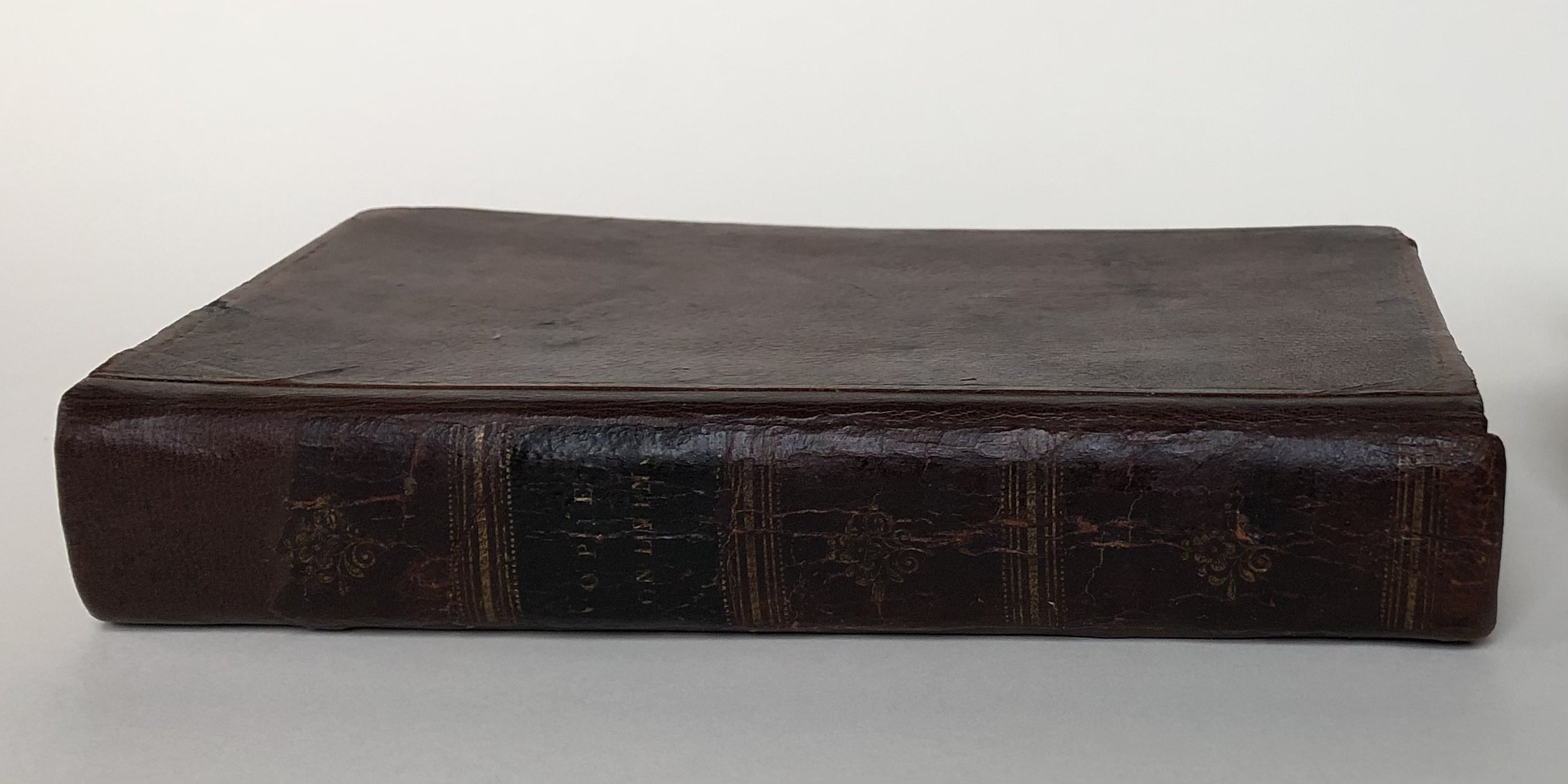Illustrations of Lying, in all its branches
Illustrations of Lying by Amelia Opie. Published in 1828.
This full brown marbled leather tight-back binding had a completely detached front board and was missing a significant portion of leather at the head of the spine. The spine leather was also cracking along the middle from continued use. The board corners had also lost leather and become exposed. Inside the book, both sets of endpapers suffered complete splits along their hinges. Due to the deterioration of the leather and the complete detachment of the front board from the rest of the book, it was decided to perform a leather reback on the book and reattach the front board using extended linings of Japanese paper.
The book was first surface cleaned and the leather consolidated. The original leather on the spine was faced using heat-set tissue activated with ethanol. Once dry, the spine leather was carefully lifted off the book with a lifting knife and set aside for later treatment. Residual leather on the spine was then mechanically removed before using a methylcellulose poultice to remove the remaining leather and old hide glue. The exposed text-block spine was then lined with kozo paper. A sheet of Japanese paper was toned using acrylics to a color sympathetic to the color of the endpapers and then tipped onto the front shoulder of the text-block to help reattach the front board (another strip of the toned paper would be used for the back endpaper hinge). The leather on the boards was lifted along the spine edge in preparation for the leather reback. The pastedowns were also lifted to accommodate the new leather and the hinge repair for the front board. Another linings of Japanese paper was adhered to the text-block spine, extending onto the boards to reattach the front board and reinforce the back; a final lining of laid paper was placed on the spine in order to secure the extended lining. A piece of conservation-grade calfskin was then dyed to an approximate color and pared. Prior to the leather reback, the exposed board corners were repaired using toned paper. The new leather was then covered onto the book. Once the leather was dry, the lifted leather was glued down; the endpaper hinges were repaired and the lifted pastedowns were re-adhered using wheat starch paste. Both book boards were individually plated in a standing press between acrylic boards to smooth the transition between the old and new leather. The edges of the original leather spine were carefully bevelled using a Dremel tool to smooth out bumps and the spine was then glued atop the new leather spine. The facing on the original spine was carefully removed and final retouching was carried out using fluid acrylics. The book was then given a final polish using SC6000 leather conditioner wax and a cotton rag.
Front board and spine, before treatment
Front board and spine, after treatment
Spine, before treatment
Spine, after treatment
Front endpaper, before treatment
Front endpaper, after treatment






